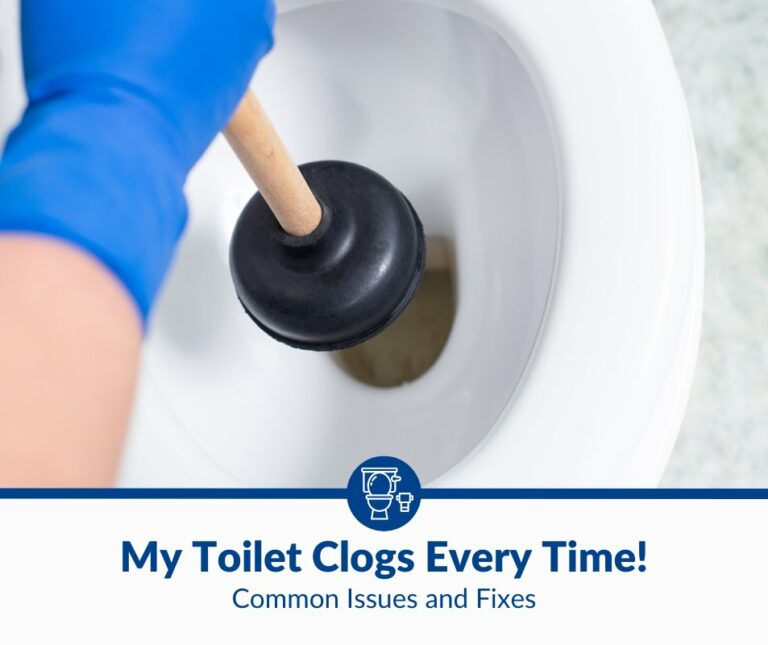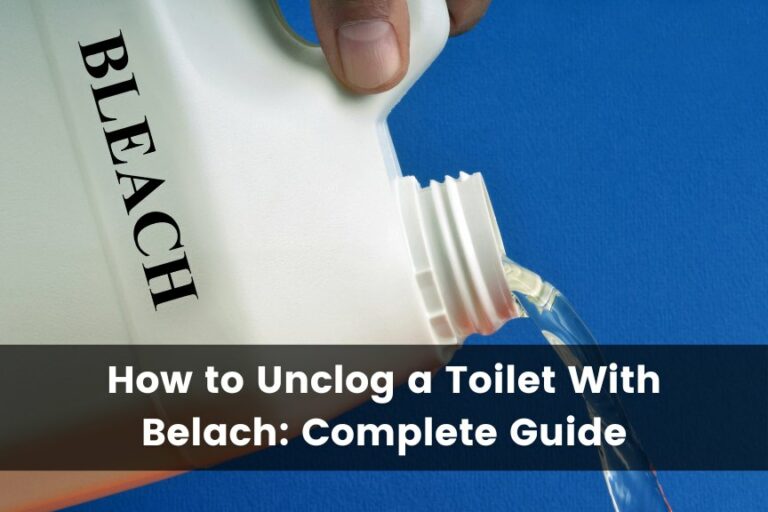How Long Can You Leave Toilet Removed?
You may not think you will ever need to remove your toilet, but it is necessary for some situations, like if the old toilet needs too many repairs, clogs frequently, is scratched or cracked, or if you’d like to replace your current toilet with a low-flush model. However, you likely have questions about this process unless you’ve done this before, and removing a toilet involves some inconvenience and disruption, so you must plan and prepare accordingly.
You can leave a toilet removed for a few days if you’ve properly pugged the drain hole. If you don’t plug the hole properly, noxious gasses and foul odors can seep into your home and cause health problems and discomfort.
In the rest of this article, I’ll explain how long a toilet can be left removed and offer tips and practices for minimizing the impact and duration of toilet removal. Let’s get to it!
Reasons for Removing a Toilet
Despite the challenges and effort involved with the task, there are many reasons why one might want to remove a toilet in their home, including the following:
- The toilet requires extensive repairs. If just one toilet part isn’t working properly, you can typically replace that one instead of removing the entire toilet. However, suppose many of the parts need repairs or replacing. In that case, replacing the entire toilet may be more cost-effective and reasonable instead of trying to repair each part individually.
- The toilet needs an upgrade. Sometimes a toilet is just old or out of style, and a homeowner wants to improve the bathroom’s look by replacing it with one that’s less of an eyesore.
- The location of the toilet no longer works. If the toilet is inconvenient in the bathroom, you may want to move it to open up more space or use it more efficiently.
- The toilet isn’t working properly. A clogged toilet can be embarrassing, messy, and difficult to fix, so if your toilet clogs frequently, you’ll want to fix the issue as soon as possible. Old, low-flush toilets frequently have stoppages; if the problem is the toilet’s age, the only fix may be a replacement.
If you do choose to replace your toilet, you’ll experience many benefits, such as:
- The toilet has improved functionality. Newer toilets often work better than the older models, so hopefully, a toilet replacement will rectify any issues you were having with the old toilet, including frequent clogging.
- The appearance of the room improves. Replacing a toilet means selecting what you’d like the new toilet to look like, so you can choose a more stylish option that better suits your style.
- The bathroom is more efficient. If the old toilet was in a bad location, removing it and relocating the toilet in the room is a good way to increase bathroom efficiency.
- There’s more space. If you’re removing a toilet entirely or replacing it with a smaller option, you’ll open up a chunk of space in your bathroom that you can use for additional storage, a new furniture piece, or simply let it be to open up the room.
Before you remove a toilet, you should educate yourself on the potential risks and challenges of doing so. Here are some risks to consider:
- You may damage the floor. If you’re not careful and patient, you can damage the bathroom floor by yanking the toilet up too quickly and causing splintering or cracking in the tile or floorboards.
- You may damage the pipes. Toilet removal may cause a pipe to burst or start leaking.
- You could get hurt. Toilets can be extremely heavy and awkward to carry, so you could pull your back if you’re not careful. I recommend using a tool to help you pick up the toilet, such as this Pick-Up Stix Toilet Installation and Removal Tool from Amazon. I like this tool because it presents common back injuries and decreases the frequency of toilet breakage by simplifying the toilet pick-up process.
For all the above reasons, you may find yourself in a situation where toilet removal is necessary. In that case, you must do it safely.
How Long Can You Leave a Toilet Removed?
I recommend replacing the toilet or installing a permanent drain stoppage solution immediately after removing the toilet so you don’t have to worry about the sewage fumes causing any problems or discomfort. However, many factors may affect how long you need to leave a toilet removed, including the following:
- A replacement toilet may not be available right away. Sometimes there are supply issues, and the toilet you want to replace the old one with isn’t immediately available. In this situation, I recommend waiting until the toilet is available before removing the old toilet.
- The necessary plumbing services may not be available. If you are comfortable removing the toilet yourself but want a plumber to pick up the task from there, you’ll need to wait until the plumber is available.
- The renovation may be complex and time-consuming. If you’re doing work beyond pulling out an old toilet and putting a new one in its place, the task may take a few days, and you’ll need to keep the toilet removed.
- The weather may not be conducive for construction work. Extreme weather can wreak havoc on piping, so sometimes, the environmental conditions determine what you can and cannot accomplish.
With these factors in mind, I understand that it may not always be possible to replace the toilet or close off the toilet drain immediately. If you plug the drain hole properly, you can leave the toilet removed for a few days without causing any problems. Here’s how you should plug the drain hole for the entire duration of time that passes between removing the old toilet and installing the new one:
- Place the removed toilet in a separate area while you focus on sealing the drain hole.
- Use a scraper to remove the old wax from the toilet flange. I like this Tarvol Heavy Duty Paint and Wall Scraper from Amazon because the blade has the perfect amount of flex for durability and strength. I also like the soft rubber handle; it is comfortable to hold even during difficult scraping tasks.
- Throw the wax away.
- Clean the flange with a stiff wire brush.
- Stuff an old rag into the drain hole.
- Cover the flange with an inverted bucket.
There may be legal or regulatory requirements regarding how long you can remove a toilet, depending on the building and where you are. Here are some questions you should look into before removing a toilet:
- Does the building you’re in have any codes regarding toilet removal? Many buildings have toilet clearance codes, and some have regulations regarding how long a toilet can remain removed.
- Do you know of any health and safety regulations? Sewage, fumes, and wastewater can seep from the toilet drain if you don’t plug it, which not only causes an unpleasant odor but can also cause some health issues if exposed for too long, as the decay of waste leads to toxicity in many cases.
- Do you know of any environmental regulations? Sewage gas can contain elements that are harmful to the environment, including methane, chlorine bleaches, and sulfur dioxide.
Tips for Minimizing Impact and Duration
Now that you are more educated about the process of removing a toilet and the risks involved with doing so, here are my tips for reducing the impact and duration of toilet removal:
- Plan and prepare in advance. Taking the time to plan out a good time to remove a toilet and ensure that you have a replacement toilet or a way to permanently close the drain pipe so you can do that immediately is one of the best ways to prevent damage.
- Follow proper procedures and safety precautions. You should take extra care to ensure the drain hole is completely plugged so no fumes or odors can seep.
- Seek professional assistance. If you don’t have any plumbing experience, getting a plumber’s help with this task may be best instead of trying to do it on your own. Of course, getting professional help is more expensive than attempting a DIY, but it may be worth the additional cost to avoid the headache and guesswork involved with the job.
- Have a contingency plan. Before attempting any major renovation or DIY project, you should take a moment to consider what could go wrong and plan ahead. Hopefully, the removal goes smoothly, and you won’t need to use your plan, but it’s always best to be prepared.
If you follow these tips, you can ensure that your toilet removal goes as smoothly and quickly as possible.
Conclusion
Toilet removal can be overwhelming, especially considering the task’s risks. However, if you plan and prepare, you greatly reduce the challenges and potential dangers of removing a toilet. I recommend you consider your own experience, needs, and resources, and if you don’t feel completely confident in your ability to remove a toilet safely, seek professional help. If you have questions or nuggets of advice, please leave a comment below!







